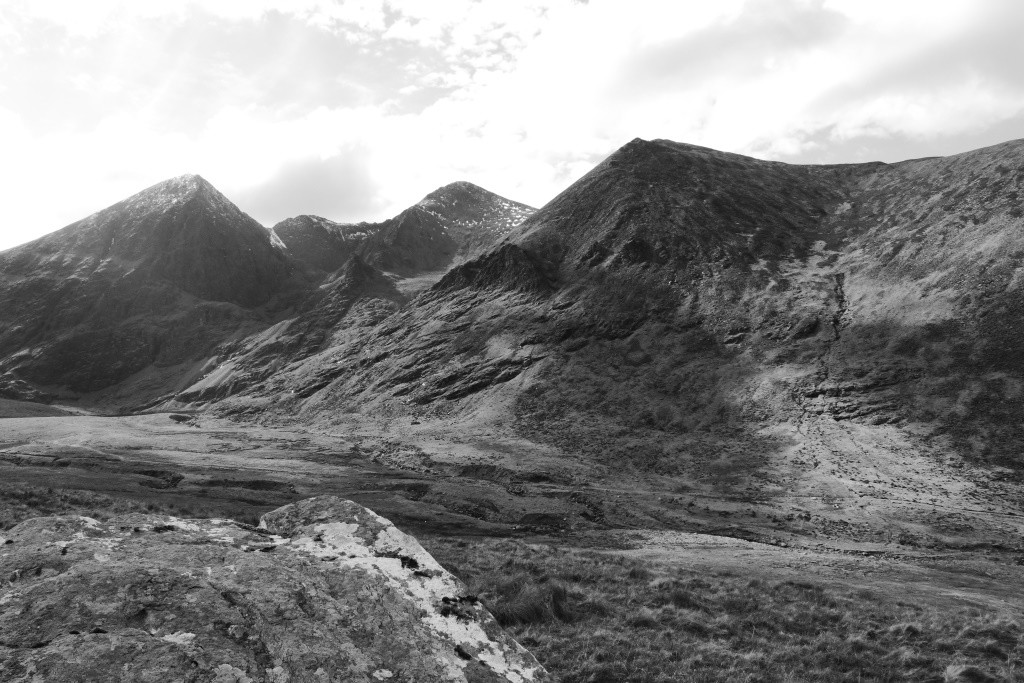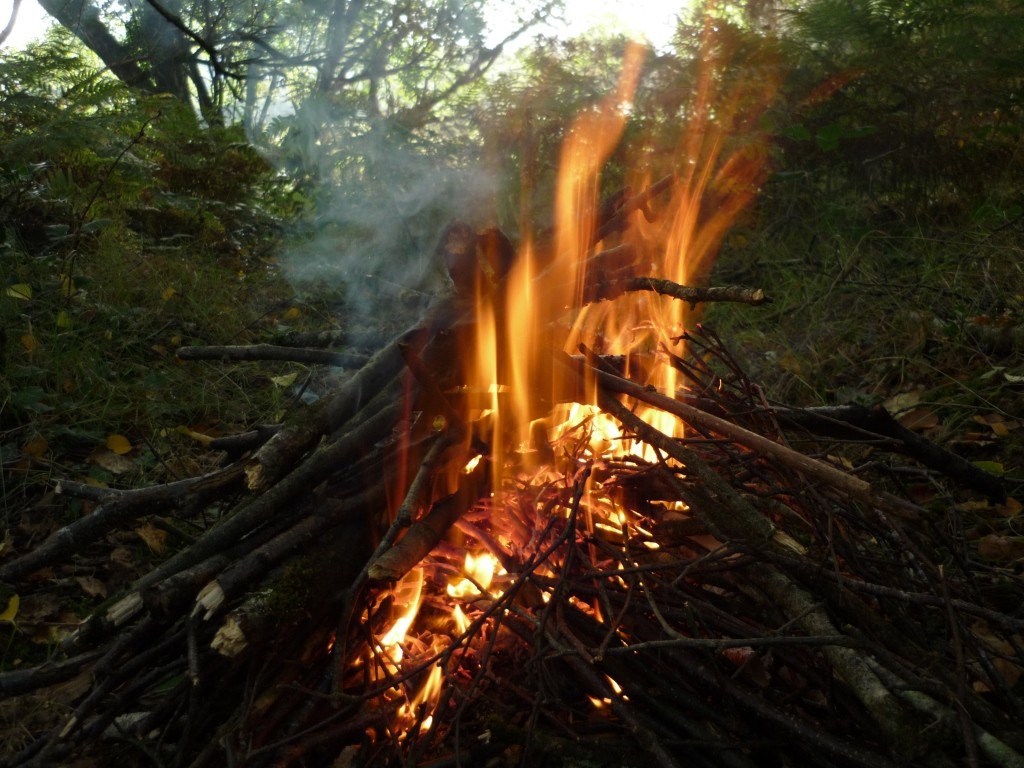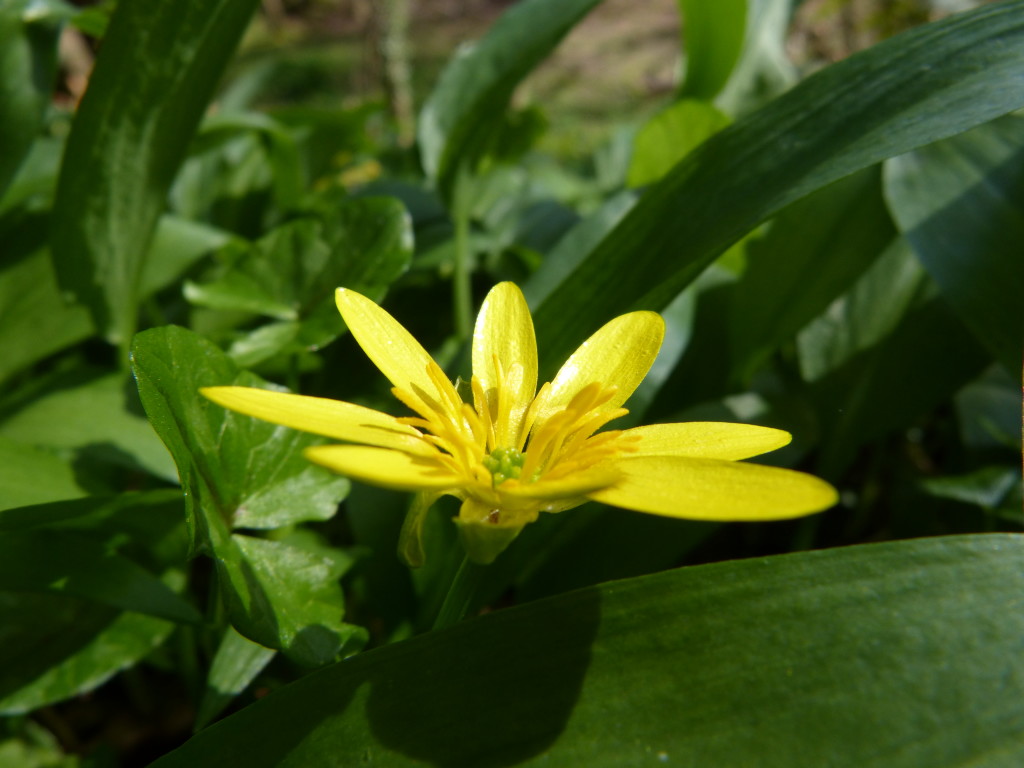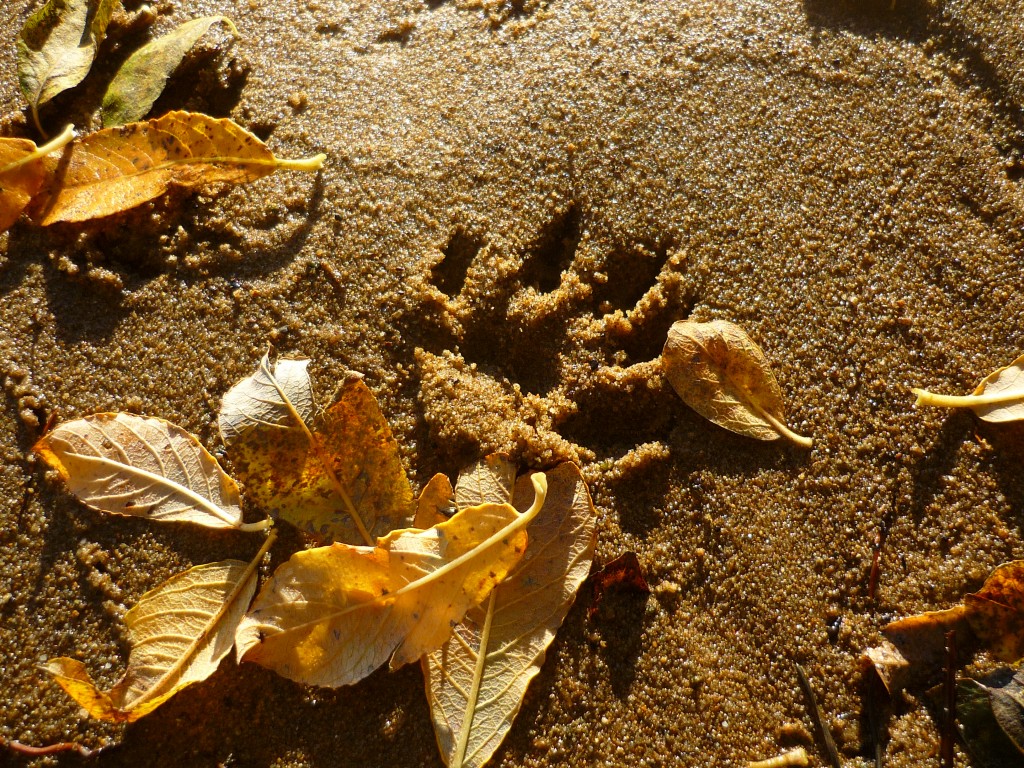By Sean Fagan

Great winter country - are you up for the challenge? (Photo: Sean Fagan - Hag's Glen, southwest Ireland).
.
7 GREAT REASONS TO DO BUSHCRAFT IN WINTER
.
Bushcrafters sometimes get a bit of stick. Occasionally when I'm conversing (moderately ranting) about the merits of bushcraft I forget myself and blurt out a statement such as - "That night I slept snug-as-a-bug under a grass thatch mattress when it was minus 15 degrees centigrade was great!".
Silence, then a volley of questions (often asked in an incredulous tone) - "You sleep out in winter?”, “Why would anyone want to sleep out in the cold?" or the best I've heard, so far, “Do you have any friends – is that why you go camping on your own in winter?”...thanks!
.
In this article - I explore 7 great reasons why being outdoors during winter can be fun, challenging and ultimately educational - and will greatly improve your overall bushcraft & camping skills.
1. THE ACID TEST OF BUSHCRAFT GEAR
Nothing tests your outdoor gear like slugging it out for days in the maelstrom of winter.
Any faulty gear you possess will expose themselves for the traitors they truly are when conditions get rough.
Possessing the right gear and knowing how to use that gear is an essential learning curve you must embrace in order to progress from greenhorn to super-slick outdoors person.
Embrace those crappy moments when you have a kit failure in winter. Those moments in winter will crystallize, like no other time of the year - why robustness & durability are essential features of outdoor gear.
.
2. REALISTIC APPLICATION OF BUSHCRAFT SKILLS
Let us take fire-skills as an example. You have practised the bow-drill, perfected your spark-lighting techniques and shaved many a feather sticks into existence in the relative comfort of your shed, garden or your local woods during the benign months of summer. Then, with unbridled enthusiasm you go camping in the winter – determined to slay the Fire God in your quest for fire-mastery!
Except you are now tired, behind on essential chores, a little hungry and damp and you can’t find that perfect elbow-to-fingertip length of dead, knot-free wood for feather sticks, or you don’t have enough time to construct a bow drill set.
Remember these moments.
Few bushcraft situations sharpen your organizational savvy, technical skills and tax your noodle more than the short, demanding days of winter and many an ego has fallen at its tempestuous altar.
If travesty visits you while winter camping then pick yourself up and move on.
Next time you go winter camping you’ll be wiser, more comfortable, and made of sterner stuff.
In summary, it takes time to perfect skills, and it takes even more time to put all your skills together so that you can become an efficient, well-prepared bushcrafter with the ability to confidently and competently tackle whatever the wilds throw at you.
Stick with it, after all bushcraft is, as the name implies - a craft, and crafts take time to master.
.

The campfire is at its most important during the chilly winter months but is, ironically, harder to achieve because of the generally damp conditions of winter. Practising fire-skills - during winter, is the key to improving success (Photo: Sean Fagan).
.
.
3. THE JOY OF ASTRONOMY
Cloudless winter nights provide a great opportunity to gaze and gasp at the sheer splendour of the celestial dome.
Associated with the twinkling stars is a wealth of folklore, navigational markers, mind-boggling physics and more classical Greek treachery & hanky-panky than you can shake a stick at – in effect, the night sky is an unadulterated joy to behold.
Getting to know the night sky is, I believe, an underrated bushcraft skill but a skill that will immensely enrich your time outdoors, especially during the darker months of winter.
As regards natural navigation via the stars and planets, focus on learning to navigate from the north star (you will need to know the constellations of Cassiopeia and the Big Dipper to help you find the north star (otherwise known as Polaris or the pole star).
Getting to know the winter constellation of Orion can also be a very helpful navigational aid along with Sirius (the brightest star) which is always in close proximity to Orion.
(Related article: Bushcraft Astronomy: Orion)
As regards the visible planets - Venus and Jupiter are particularly useful and are often visible during winter.
.

Even in urban settings it's possible to enjoy astronomy. Bearing down from the southerly skies - the MOON and fiery VENUS - both good navigational markers of the night sky (Photo: Sean Fagan - River Liffey, Dublin, Ireland).
.
In summary, the night sky is, without doubt, a great boon for the spirit and for sharpening your night-navigation skills.
.
4. TRACKING
I find the damper conditions of winter more conducive to tracking. The soil is damper and there are a lot more muddy patches. Damp soil and muddy areas means an abundance of clear tracks. And if you are lucky enough to have snow – well, you have reached tracking nirvana my friend – enjoy the bliss of effortlessly following animal trails for many an hour.
After a few hours of tracking animals in snow you will know the animals better that they know themselves! Seriously though, snow is an amazing substrate for tracking and will greatly improve your tracking skills!
When you can continuously follow animal tracks for a long stretch you gain a far greater insight into their patterns of movement and therefore, animal behaviour.
For example, I've followed many hare tracks in snow, and many hares will actually double back on their tracks, then leap off their own trail to the side, and take off in a different direction. Hares do this to confuse any would be predators following their scent. Ingeniously evolved behavior, and startlingly clear a lot of the time when following a string of hare tracks across snow. A clear example of why following animal tracks in snow is a great boon for trackers.
.

The wonderful bounding tracks of a snowshoe hare (Lepus americanus), Ontario, Canada (Photo: Cian Fagan).
.
When I read in the tracking literature of the seemingly erratic trails of hares and how they are able to outwit any would-be predators following their scent I was skeptical. Then I started tracking hares, in snow. Was I wrong. Hares are that smart!
A lot of tracking is about deduction, about role-playing what made an animal, via its tracks and sign, move in a certain way, why it stopped etc. When you can continuously follow a track for a long distance you get a feel for how and why an animal uses the landscape - you get to deepen your understanding of animal behaviour - which is one of the tracking holy grails that ever serious tracker should strive to acquire.
.
5. NIGHT NAVIGATION
Finding it a tad boring navigating with the old compass and map during daytime? Try navigating across open country - at night. If that’s too easy, try navigating through a wood at night (a navigable wood - avoid impenetrable woodlands).
Night navigation will really hone your map and compass skills. Include night-time navigational aids such as the North star, moon, Venus and Orion and you are well on your way to becoming a hiker of the night. Becoming proficient with the map and compass is a core bushcraft skill.
A good working knowledge of map and compass skills along with learning how to use natural navigation aids will ensure that you are on the right track to your destination, even in the dark, inky depths of a cold winter’s night.
Night navigation is also great fun. The level of anticipation is palpable when I bring clients out to practice night-navigation. Often, it's only until they have reached the very end of their quest - their destination, will they know for sure if they were successful in their navigational ability.
.
6. WINTER IDENTIFICATION OF PLANTS
Remember summer? When every time you took a leisurely stroll through your favourite patch of greenery there was fecund displays of life all around you? Flowers were everywhere, flaunting their brash colours for all to see while trees rustled and shimmered with a full canopy of leaves. Then winter arrived, and everything seemed to became bare - stripped back. Except it wasn't bare - just curtailed.
Our prehistoric ancestors were very adept at identifying plants during the winter months – they had to, and it behoves us, as aspiring bushcrafters, to emulate their winter plant identification skills.
Winter can lose a lot of its bite when you can positively identify many herbaceous plant and trees species. You will be able to select the best firewood, construct the best shelter, eat heartily on edible roots and even make some nice herbal teas to name a few benefits with good winter identification skills.
Remember, wild plants (and wild animals) have a healthy disregard for the Gregorian Calender. The common misconception that spring (from March onwards) is somehow the unofficial start-time of fresh plant growth (with subsequent blooming) is simply not true.
Many wild plants (such as, for example, coltsfoot, winter heliotrope and lesser Celendine) appear as early as December.
Many plants of deciduous woodland floors have evolved to emerge, sprawl their fresh leaves into the winter air and then successfully bloom before the trees above them have fully leafed out and cast a dark shade. It's not just herbaceous plants that can be early starters. The pinkish-white, floral flush of cherry trees are often well under way in early January. There are floral mavericks everywhere.
My advice: get out there and explore the unique rhythms of the earth - there is far more out happening in winter than is commonly perceived - you will be surprised, stunned even, when you experience at an intimate level, the hidden depths of wintertime.
Crucially, plants in winter often take on a different appearance than summer. Obviously, they generally lack flowers, but they can also lack leaves as well.
Becoming familiar with the over-wintering appearance of many wild plants is important for improving your year-round knowledge of plants but also for improving your winter-foraging skills - as many plants have energy-rich roots to tide them over the winter and these roots can provide a valuable source of energy when other wild foods are scarce or hard to acquire.
.

The bright, yellow petals of Lesser Celandine, Ranunculus ficaria. Lesser celandine is a great source of late winter/early spring root starch (Photo: Sean Fagan).
.
7. WINTER AS MY MUSE
The last point I want to make about winter camping borders a little on the esoteric, so bear with me. If you camp year round you will become increasingly attuned to the different seasons. Each season has its own distinct tone. Who doesn't love the bright draw of long summer days? Or the bursting fourth of life in spring time? Or the misty-damp, fungal forays of Autumn?
However, much maligned winter has its own, unique moods that are hard to beat.
Firstly, it’s dark a lot. There is something bordering on the magical and primeval about sitting in front of a nice camp fire in the austere depths of a winter’s night while listening to the sounds of the night.
Allow those winter nights to seep into you, and in time those long dark nights can be a great source of serenity and inspiration.
The other aspect of winter I like is that, with bushcraft skills and knowledge, I can make myself relatively comfortable among the often cold, damp conditions of winter. That gives me a very satisfying feeling of self-reliance.
So get out there, put in the practice and before long you will be an avid child of winter. It won’t be long until your waxing lyrical about the many joys of winter.
Grab those adventures with two hands and most importantly – explore the wealth of riches to be found throughout winter.
.
“The world is sick to its thin blood for lack of elemental things, for fire before the hands, for water welling from the earth, for air, for the dear earth itself underfoot”.
Henry Beston
.
Related articles on this website:

Recent Comments